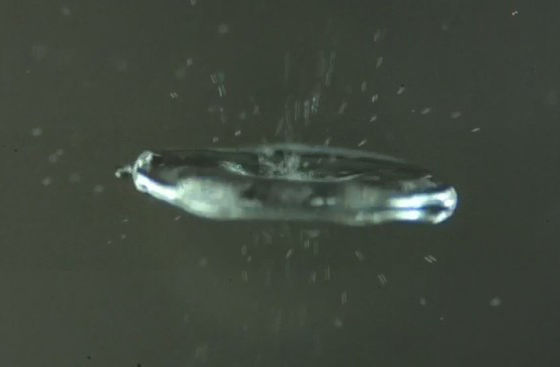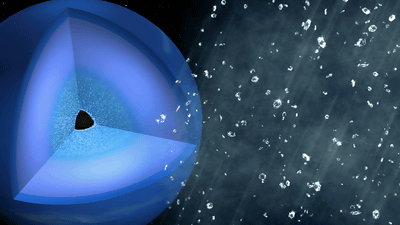It may not have been lightning that gave birth to life, but 'microlightning' produced by water splashes

Those who are interested in life sciences may be familiar with
Spraying of water microdroplets forms luminescence and causes chemical reactions in surrounding gas | Science Advances
https://www.science.org/doi/10.1126/sciadv.adt8979
'Microlightning' in water droplets may have sparked life on Earth | Stanford Report
https://news.stanford.edu/stories/2025/03/microlightning-in-water-droplets-may-have-sparked-life-on-earth
Tiny Bolts of Lightning Produced by Water Droplets May Have Sparked Life on Earth | Discover Magazine
https://www.discovermagazine.com/the-sciences/tiny-bolts-of-lightning-produced-by-water-droplets-may-have-sparked-life-on
The famous Miller-Urey experiment shows that organic molecules can be produced by lightning in combination with gases such as methane, ammonia, and hydrogen. However, some argue that this scenario is not realistic because lightning occurs too infrequently and the oceans are too large to disperse chemicals over a wide area.
In a study published in the journal Science Advances, a team led by Stanford University chemistry professor Richard Zare and others was inspired by another study that showed that sprayed water droplets could ionize gas molecules in the air. They conducted an experiment to explore a different approach.
In their first experiment, the team levitated a droplet of water using sound waves, while varying the distance between the sound transmitter and reflector to cause the droplet to produce tiny splashes and observe their behavior.

You can see the experiment in action by playing the video below.
They are small and difficult to see, but if you zoom in you can clearly see tiny droplets emerging from the droplets.

The results of this experiment showed that larger droplets tend to carry a positive charge and smaller droplets a negative charge, and that when two droplets of opposite charges come close to each other, a discharge occurs between them.
The sparks between the droplets are so tiny they are invisible to the human eye, so the team had to use a high-speed camera to observe the light. Nevertheless, this phenomenon has the same effect as lightning, in exciting, dissociating and ionizing molecules, so the team has named this phenomenon 'microlightning.'
Microlightning, although small in scale, carries a lot of energy. Therefore, the research team conducted an experiment in which room temperature water was sprayed into a mixture of gases containing nitrogen, methane, carbon dioxide, and ammonia, which existed on the primordial Earth, to generate water droplets and microlightning.
As a result, it was confirmed that organic molecules with carbon-nitrogen bonds, such as

The findings suggest that the building blocks of life could be produced without lightning, by tiny sparks generated by waves or waterfalls.
'On the early Earth, water was spewing out all over the place,' said Saleh. 'It's possible that water would have collided with cracks in the rocks or against the rock surfaces, and this could have repeatedly caused chemical reactions. I believe this hypothesis overcomes many of the problems that have been pointed out about the Miller-Urey hypothesis, which states that life arose through chemical reactions caused by electrical discharges.'
Related Posts:







